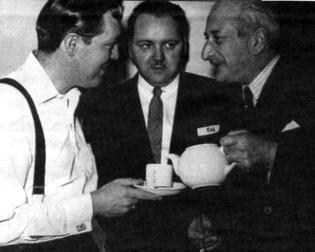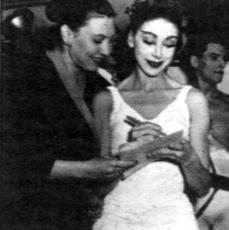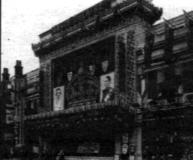The Theatre that survived the war
With a lifespan of just over 30 years, the Davis Theatre was one of the most popular cinema theatres of its time. It consistently packed out its 3,725 seat capacity with hundreds of film showings, plays, live music and dance.
It was the fourth largest cinema in Britain and took its name from the family who built it.
Work on the High Street site began in October 1927 and it took 13 months to build.
Primarily intended to be a cinema, the Davis opened on 18th December 1928, with the Hollywood silent film called The Last Command.
The two films which had the most success were Disney's Snow White and the Seven Dwarfs and The Wicked Lady. Prices at the Davis ranged from ninepence to five shillings and ninepence.
The theatre was a family run business and when Israel Davis died in 1943 his son Alfred succeeded him as managing director.
On 14th January 1944, during the World War Two, a German plane dropped two bombs on Croydon, one of which fell through the roof of the Davis while an audience of 2,000 watched the Joan Davis film, Two Senoritas. Although the bomb killed seven people and injured at least 25, it did not explode, so hundreds of lives were spared.

Image: Bill Haley, one of his comets, Alfred Davis.
Joan Smith, from Penge, said: "I was four months pregnant and was sitting in the middle of my friends when the bomb dropped. One of my friends was killed, although I didn't know this at the time, and we were panicking to get out.
"My other friend lost a leg and as I rushed out to the foyer I hadn't even realised that my shoes, which were laced up, had completely blown off. I had injuries to both legs and was taken to Croydon General.
"Afterwards I was transferred to a military hospital in Epsom and was there for two months. On June 17, 1944 my daughter Patricia was born. She will be 60 this month and I will be 81 next month. We were both lucky."
After the war the Davis developed more live shows and programmed one week of live theatre to three weeks of film.

Bolshoi Ballerina Raissa Struchkova asks Dame Margot Fonteyn for an autograph in October 1956.
The theatre's proudest moment, one so momentous that it is still talked about today, was a rare performance by the Russian Bolshoi Ballet. This was only show by the Bolshoi in England to be performed outside Covent Garden.
Hopeful theatre-goers queued for days to get a ticket and lines snaked all the way back to East Croydon station. May Johnson, of the Croydon Society, was one of the lucky ones after she queued with her friend for three days.
She said: "We took our sleeping bags and took it in turns to queue for tickets. It was such a momentous event that everyone was trying to get tickets. It was worth the wait, a performance I shall never forget.
"The Bolshoi Ballet is still remembered and talked about today. I was privileged to be there."

Image: The Davis Theatre during the Coronation of Queen Elizabeth II.
Other famous names who graced the stage in the 1950s included Maurice Chevalier, Frankie Laine, Bill Haley and the Comets and Liberace. Jazz concerts and boxing matches were also staged there.
On 2nd June 1953, a 24 foot wide television screen was installed for a full house to watch the Coronation of Queen Elizabeth II live.
Declining cinema audiences and a reduction in film production forced the venue to close in May 1959. A few weeks later it was demolished.
The only clue to this great theatre's existence, aside from the extensive programmes, press cuttings and pictures in Croydon Local Studies Library and Archive Service, is an office block called Davis House.
